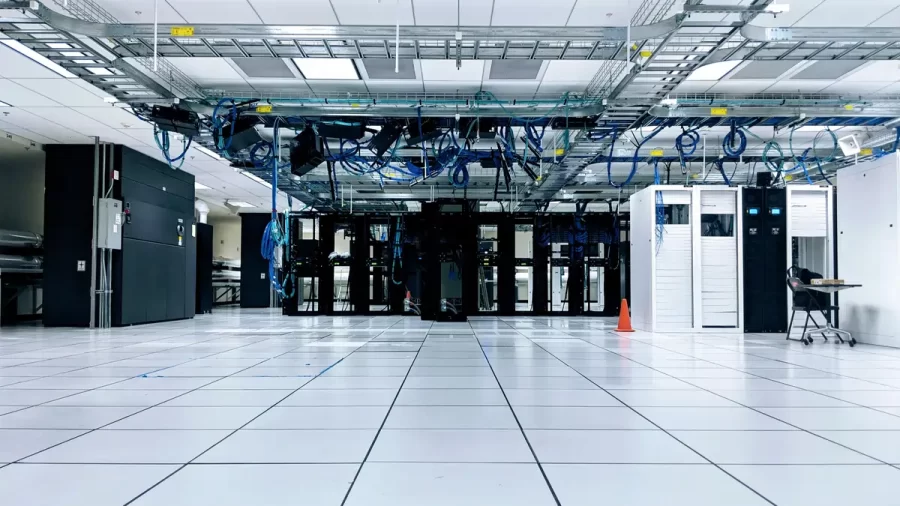
It’s an age of unparalleled technological advancement—an artificial intelligence AI renaissance that is revolutionizing the way we work, communicate, and interact with the world around us.
AI has emerged as a powerful force, permeating industries and reshaping the employee experience in ways we couldn’t have imagined before. In this blog post, we’ll delve into what the rapid rise of AI means for employees, and how it presents a world of exciting opportunities for those who embrace this transformative technology.
Viewing Disruption Through a Historical Lens
AI is hardly the first disruptive technology, though it’s caused its share of uncertainty due to the speed with which it was adopted. To get a more accurate picture of what such a transformative technology means in a human context, let’s look at a much older example.
Imagine a painter huddled over their canvas, striving to capture the essence of their subject with vibrant strokes of color. The air is thick with the smell of paint, and it’s quiet except for the barely audible glide of a brush across the canvas. This artist has dedicated their life to mastering their craft, drawing upon their unique perspectives and techniques to create breathtaking works of art.
Suddenly, an eccentric neighbor barges in, holding a smudged pewter plate. There’s a light in his eyes, and he’s out of breath from running up the stairs. “I’ve done it!” he says triumphantly, holding out the sheet of metal. “I’ve captured this image using light from the sun.”
The artist takes the pewter plate and observes the image—a view from his inventor neighbor’s window—and immediately sees the significance. This new method of recording images can freeze a moment in time with remarkable precision, capturing details that the human eye may miss, or that the brain might forget.
Slowly, news of this new technology spreads. At first, some artists resist the technology, fearing it will render their skills obsolete. However, others see it as an opportunity to push the boundaries of their creativity. They experiment with different lenses, angles, and exposures, discovering new ways to express themselves through the lens. The technology, which comes to be known as the camera, becomes an extension of their artistic sensibilities, enabling them to capture scenes and emotions in ways that were previously unimaginable.
As time goes on, the artistic world undergoes a transformation. The camera inspires artists to explore abstract and unconventional forms of expression. Some embrace the challenge of capturing fleeting moments of light and shadow, while others focus on conveying raw emotions through the lens. Painters learn from photographers, and photographers learn from painters, as they exchange ideas and techniques, blurring the lines between their respective mediums.
By now you can see where this narrative is going. Just as the invention of the camera didn’t push artists to put down their paints, the advent of AI doesn’t diminish the skills that people have today. AI, like the camera, is a tool that can be used to expand the realm of possibility. In the end, both tools are a catalyst for propelling human skill sets into new territories.
Understanding AI: Dispelling Common Concerns
While it’s natural for employees to have concerns and fears about the rise of AI, it’s important to recognize that these fears are often rooted in misconceptions. The purpose of this article is not only to address these common concerns, but also to highlight the tremendous potential and benefits that AI brings to the table. Instead of viewing AI as a threat, it can be seen as a tool that can improve skills, augment capabilities, and elevate the employee experience.
Enhancing Human Capabilities > Fear of Job Loss
One of the primary concerns employees have is the fear that AI will replace their jobs entirely. However, the reality is far from this dystopian scenario. AI is not here to replace humans but to enhance their capabilities. According to Mckinsey, while nearly all occupations will be affected by automation, only about 5 percent of occupations could be fully automated by currently demonstrated technologies.
AI technologies excel at automating repetitive, mundane tasks, freeing up valuable time for employees to focus on higher-value work that requires critical thinking, creativity, and problem-solving skills. By automating routine tasks, AI empowers employees to engage in more meaningful, strategic, and intellectually stimulating endeavors.
Moreover, AI and humans have complementary strengths. While AI is proficient at processing vast amounts of data and extracting patterns and insights, it lacks the depth of understanding, intuition, and contextual knowledge that humans possess. Employees should view AI as a powerful ally—a tool that can amplify their skills, increase efficiency, and augment their capabilities rather than replace them.
Human Oversight and Decision-Making > Lack of Control
Another concern that employees may have is the perceived lack of control over AI systems. It’s important to highlight that AI is not a self-governing entity; it operates under human guidance and oversight. Humans have the final say, and are responsible for setting the goals, parameters, and ethical guidelines that AI systems operate within. AI systems are designed to assist, support, and enhance human decision-making, not to replace it.
Transparency and explainability are vital in addressing this concern. Companies need to ensure that AI algorithms are explainable and that employees have access to the insights and logic behind AI-driven decisions. By providing employees with visibility and control over AI systems, organizations can foster trust, allowing individuals to feel empowered and confident in working alongside AI technologies.
Responsible AI Development and Implementation
Make no mistake—ethical considerations surrounding AI are legitimate concerns for employees. It’s crucial to acknowledge these concerns and emphasize the significance of responsible AI development and implementation. Ethical AI should prioritize fairness, accountability, transparency, and privacy.
Organizations need to establish clear guidelines and robust frameworks to ensure that AI technologies are developed and deployed in a responsible and ethical manner. By fostering a culture that values and upholds ethical standards, employees can be reassured that AI systems are designed to respect their rights, avoid biases, and adhere to legal and regulatory requirements.
Addressing employees’ ethical concerns is a two-way street. It involves not just organizational efforts, but requires active participation from employees themselves. Encouraging open dialogue, soliciting feedback, and involving employees in shaping AI policies and practices can provide employees with a sense of ownership and ensure that AI is aligned with their values and expectations.
By dispelling these common concerns and providing employees with a clear understanding of AI’s role, organizations can pave the way for a positive and fruitful integration of AI in the employee experience. In the next sections, we will delve into the exciting opportunities that AI offers employees, enabling them to thrive and excel in their roles.
The Potential of AI for Employees
The widespread adoption of AI provides a multitude of opportunities for employees, transforming the way they work and enhancing their overall experience. In fact, Forrester predicts that over the next decade, human/machine collaborative teams will increasingly flourish to drive new levels of quality, productivity, and employee experience.
Here are a few of the exciting ways AI can improve the employee journey, empowering individuals to reach new heights of productivity, decision-making, learning, and work-life balance.
Enhanced Productivity and Efficiency: Liberating Time for Meaningful Work
AI excels at automating repetitive and mundane tasks that consume significant time and effort. By leveraging AI-powered technologies, employees can delegate these routine responsibilities to intelligent systems, freeing up valuable time for more meaningful and strategic work.
With the burden of repetitive tasks lifted, employees can focus on activities that require critical thinking, creativity, and problem-solving skills. This not only enhances their productivity but also provides a sense of fulfillment and satisfaction in their professional endeavors.
Smarter Decision-Making
AI has the remarkable ability to process vast amounts of data, identify patterns, and extract valuable insights. By harnessing the power of AI, employees can access timely and accurate information that empowers them to make more informed decisions.
AI-driven analytics and predictive models can help employees identify trends, anticipate customer needs, and optimize strategies. By augmenting human intelligence with AI, employees can tap into a wealth of data-driven knowledge, enabling them to make better choices and drive their organizations forward.
Personalized Learning and Development
AI-powered training and development programs open up new possibilities for personalized learning experiences. By analyzing individual learning styles, preferences, and skill gaps, AI systems can curate customized learning paths for employees.
Whether it’s recommending relevant courses, providing personalized feedback, or offering interactive simulations, AI can cater to the unique needs of each employee. This tailored approach to learning and development not only enhances skill sets but also fosters a culture of continuous improvement, enabling employees to stay ahead in an ever-evolving professional landscape.
Improved Work-Life Balance
AI’s ability to handle mundane and repetitive tasks also contributes to improving work-life balance for employees. By automating administrative and routine activities, AI alleviates the burden of time-consuming chores, allowing employees to channel their energy towards more fulfilling and impactful aspects of their jobs.
This shift in focus promotes employee well-being, reduces stress levels, and enables individuals to strike a healthier balance between work and personal life. With AI as a supportive partner, employees can experience greater job satisfaction and overall happiness.
By embracing the promise of AI, employees can unlock their true potential, leveraging its capabilities to achieve higher levels of productivity, make informed decisions, acquire personalized skills, and maintain a healthier work-life balance. The AI renaissance is not about replacing human contribution but enhancing it, allowing individuals to focus on what they do best while harnessing the power of AI as a valuable tool in their professional journey.
Human-AI Symbiosis: Pushing for Excellence
To embrace the AI renaissance, employees should stay informed, upskill, and cultivate a growth mindset. By doing so, they can enhance their skills, make better decisions, and contribute to organizational success. Embracing AI opens doors to new possibilities, elevates work, and fosters a harmonious partnership between humans and AI.
AI has the power to revolutionize the workplace by automating tasks, providing insights, and empowering employees—amplifying human potential rather than diminishing it. While AI handles data analysis and streamlines processes, it’s the human touch that brings qualities like emotional intelligence, creativity, critical thinking, adaptability, and empathy to the table. These qualities form the foundation of exceptional customer service, collaboration, innovation, and agile responses to change.
In this collaborative future of work, humans and AI work together for remarkable results. Let’s forge a future where human ingenuity and AI-driven advancements lead to unparalleled success.

